Search Result
Results for "
Aromatic compound
" in MedChemExpress (MCE) Product Catalog:
4
Biochemical Assay Reagents
8
Isotope-Labeled Compounds
| Cat. No. |
Product Name |
Target |
Research Areas |
Chemical Structure |
-
- HY-W355129
-
|
|
Others
|
Cancer
|
|
MeIQx, a dietary aromatic amine, is mutagenic compound could be isolated from present in fried beef and beef extracts. MeIQx binds covalently to hemoglobin. MeIQx induces liver tumors .
|
-
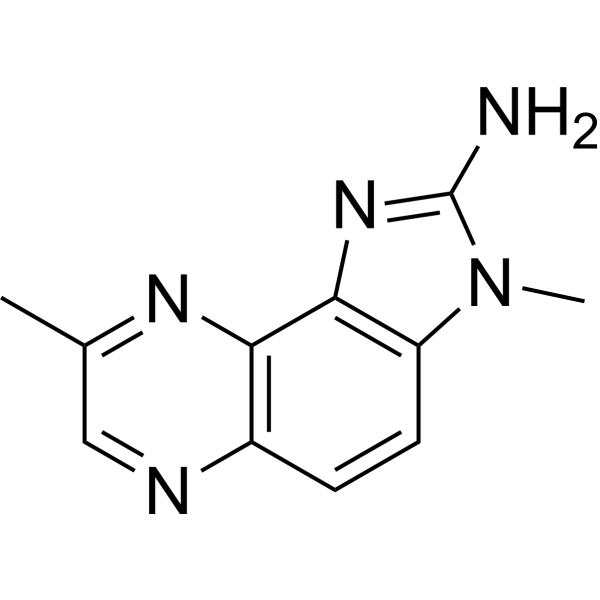
-
- HY-W010615
-
|
|
Others
|
Others
|
|
4-Methylthiophene is an intermediate used in the synthesis of the aromatic sulfur compounds .
|
-
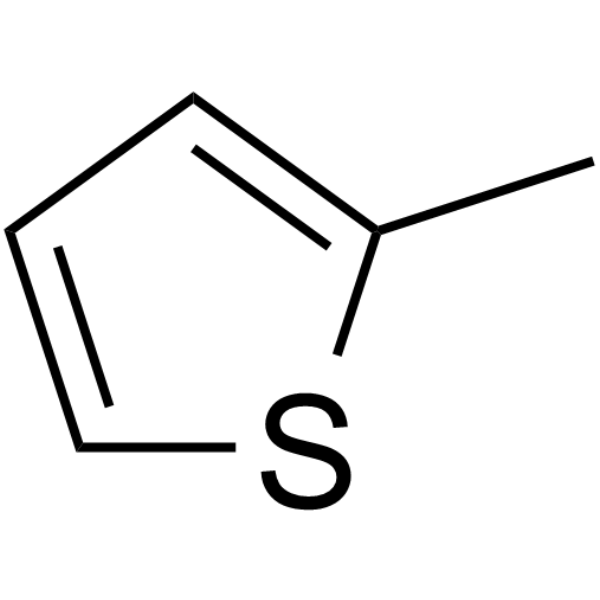
-
- HY-N3192
-
|
|
Bacterial
|
Infection
|
|
Nervogenic acid is an aromatic compound that can be isolated from Piper elongatum VAHL. Nervogenic acid has antibacterial activities and antioxidative effects .
|
-
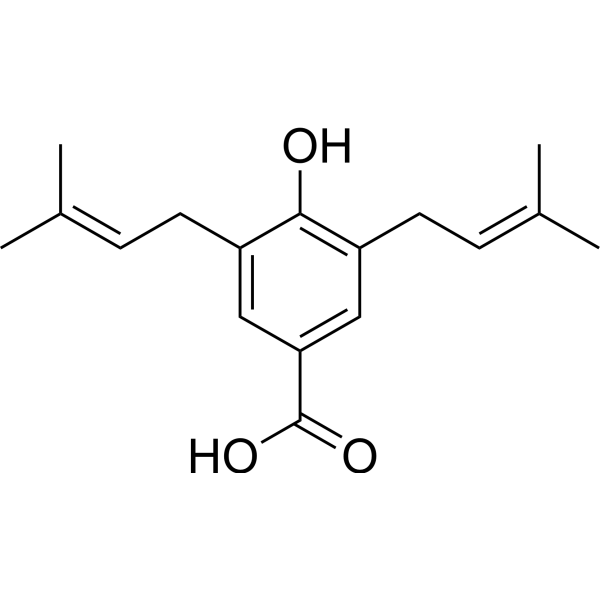
-
- HY-W167708
-
|
|
Others
|
Others
|
|
2-Ethyl-5-methylphenol is an aromatic compound that can be detected in breakfast cereals, cereals and grain products .
|
-
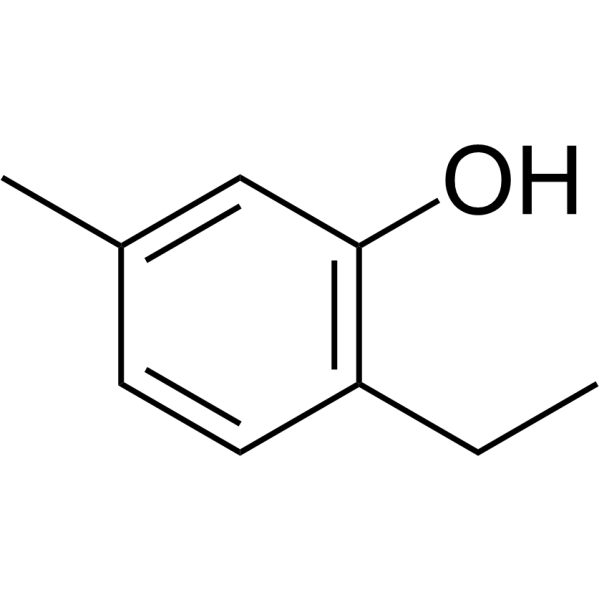
-
- HY-N11559
-
|
|
Others
|
|
|
Methylzedoarondiol is a natural compound that can be isolated from Curcuma aromatic SALISB .
|
-

-
- HY-116479
-
|
|
Others
|
Others
|
|
Citromycetin is an aromatic polyketide compound from Australian marine-derived and terrestrial Penicillium spp .
|
-
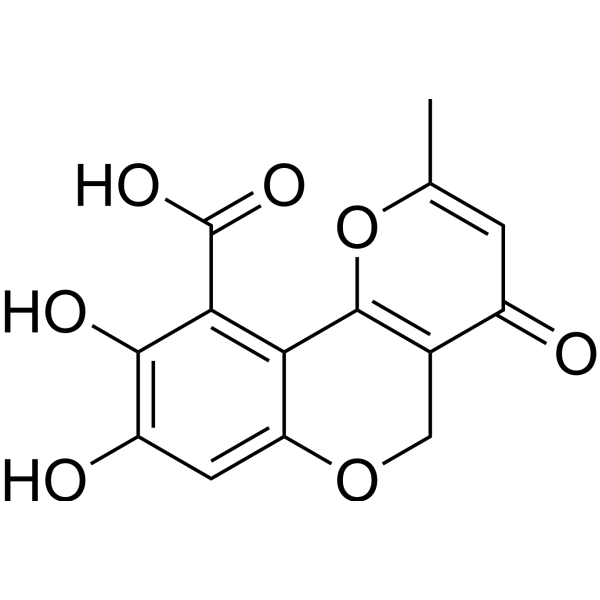
-
- HY-156195
-
|
|
Fungal
|
Infection
|
|
BHBM (compound 1) is an aromatic acylhydrazone antifungal agent with high bactericidal activity against Cryptococcus neoformans .
|
-
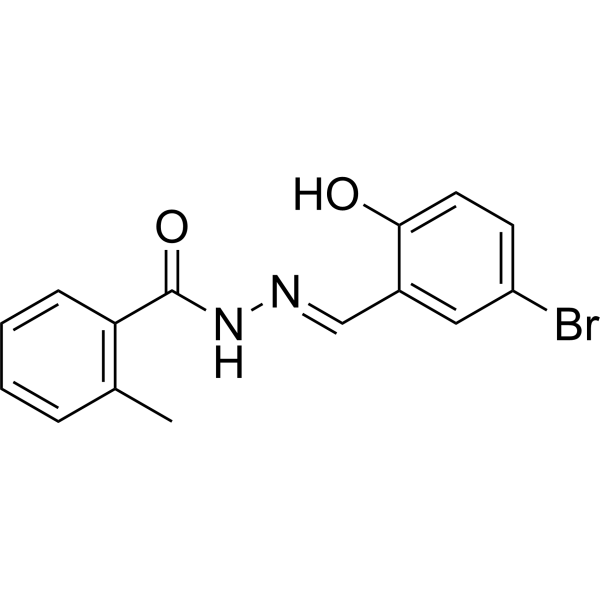
-
- HY-75814
-
|
p-Isopropoxybenzoic acid
|
Biochemical Assay Reagents
|
Others
|
|
4-Isopropoxybenzoic acid (p-Isopropoxybenzoic acid) is an aromatic carboxylic acid organic compound that can be used as a synthetic intermediate in organic synthesis.
|
-
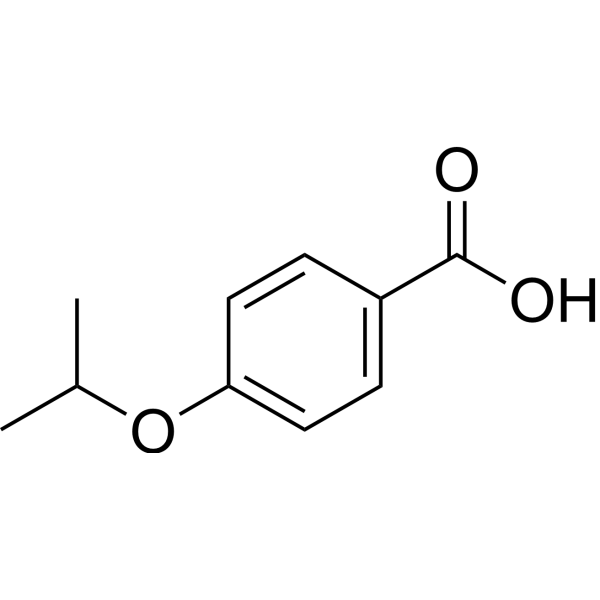
-
- HY-N8274
-
|
|
Others
|
Inflammation/Immunology
|
|
Flavidin, an aromatic compound, can be isolated from Coelogyne longipe. Flavidin is an antioxidant, and has radical scavenging activity .
|
-
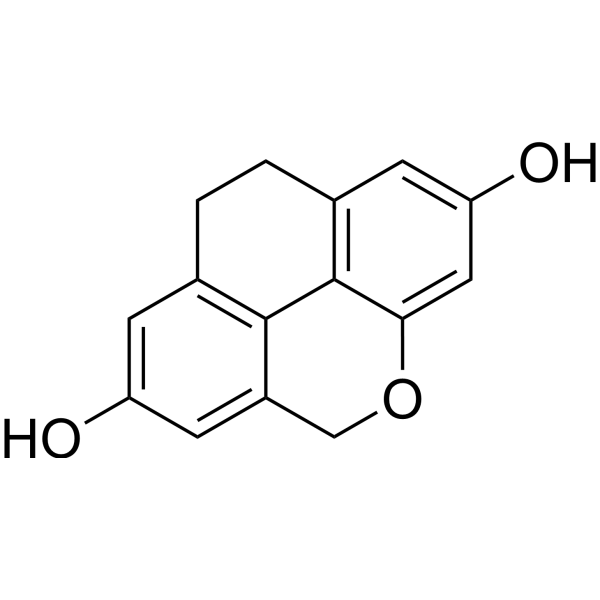
-
- HY-W074514
-
|
|
Others
|
Others
|
|
4-Allyltoluene, an aromatic compound, can elicite antennal olfactory response of Mediterranean fruit fly measured by electroantennography (EAG) .
|
-

-
- HY-N0763
-
Angelicin
Maximum Cited Publications
7 Publications Verification
Isopsoralen
|
Apoptosis
Virus Protease
|
Cancer
|
|
Angelicin, a furocoumarin naturally occurring tricyclic aromatic compound, structurally related to psoralens, is reported to have anti-cancer, antiviral, anti-inflammatory activity.
|
-

-
- HY-W016562
-
|
2-Benzamidoacetic acid
|
Endogenous Metabolite
|
Metabolic Disease
|
|
Hippuric Acid (2-Benzamidoacetic acid), an acyl glycine produced by the conjugation of benzoic acid and glycine, is a normal component in urine as a metabolite of aromatic compounds from food.
|
-
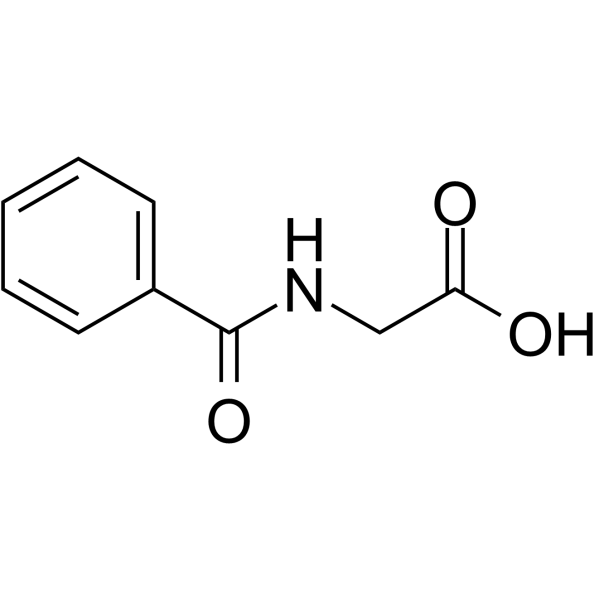
-
- HY-W100681
-
|
|
Others
|
Others
|
|
2'-Hydroxy-5'-methylacetophenone belongs to the class of organic compounds known as alkyl-phenylketones. These are aromatic compounds containing a ketone substituted by one alkyl group, and a phenyl group.
|
-
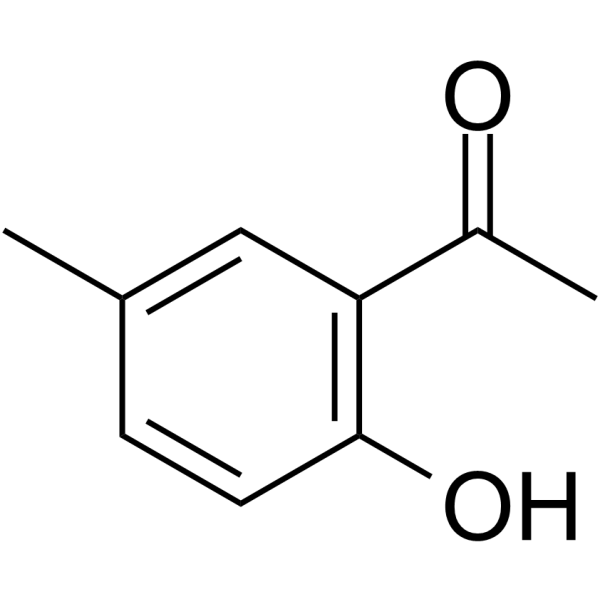
-
- HY-W026772
-
|
|
Fluorescent Dye
|
Others
|
|
Fluorene, a polycyclic aromatic hydrocarbon (PAH), is a precursor to other fluorene compounds. Fluorene and its derivative can be used as a precursor to fluorene-based dyes .
|
-
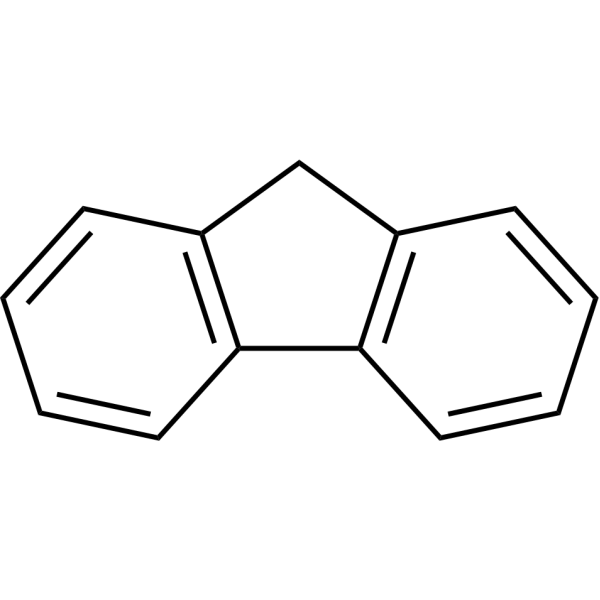
-
- HY-N1426
-
|
Frambione; 4-(4-Hydroxyphenyl)-2-butanone
|
PPAR
|
Cardiovascular Disease
Metabolic Disease
|
|
Raspberry ketone is a major aromatic compound of red raspberry, widely used as a fragrance in cosmetics and as a flavoring agent in foodstuff; also shows PPAR-α agonistic activity.
|
-
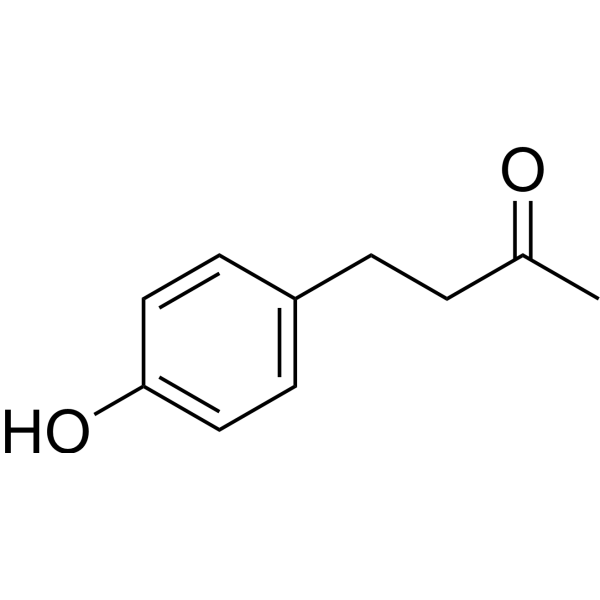
-
- HY-W012788
-
Maltol
2 Publications Verification
|
Endogenous Metabolite
|
Others
|
|
Maltol, a type of aromatic compound, exists in high concentrations in red ginseng. Maltol is a potent antioxidative agent and typically is used to enhance flavor and preserve food .
|
-
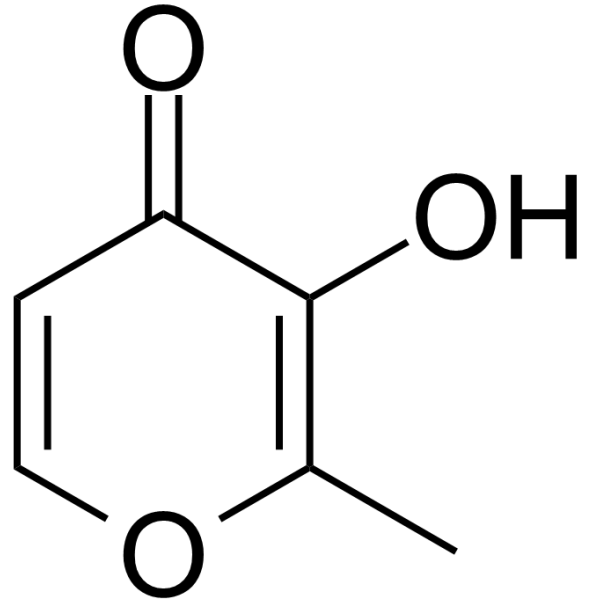
-
- HY-Y0061
-
-
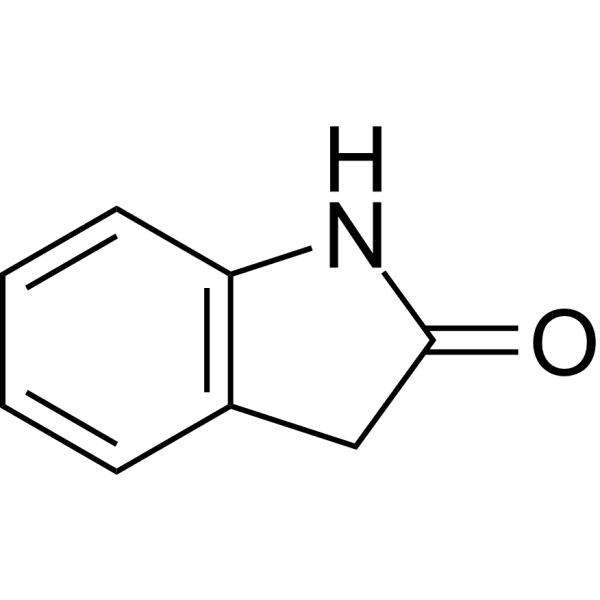
-
- HY-W115609
-
|
N-Benzoylaniline
|
Biochemical Assay Reagents
|
Others
|
|
N-Phenylbenzamide (N-Benzoylaniline) exhibits high rectification and high conductance. N-Phenylbenzamide is utilized to manufacture dyes, pigments, perfumes and other aromatic compounds .
|
-

-
- HY-W010062
-
|
|
Others
|
Metabolic Disease
Cancer
|
|
4-Chlorophenylacetic acid is a compound belongs to a family of small aromatic fatty acids with anticancer properties. 4-Chlorophenylacetic acid can provide carbon and energy for Pseudomonas sp .
|
-
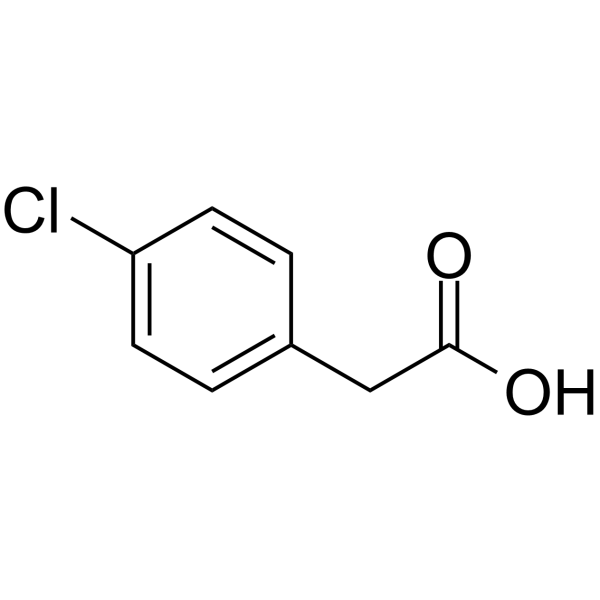
-
- HY-141495A
-
|
(-)-PW0464
|
Dopamine Receptor
|
Neurological Disease
|
|
Razpipadon ((-)-PW0464), an aromatic compound, is a dopamine receptor partial agonist. Razpipadon can be used in the study of dopamine D1 ligand-mediated related psychiatric disorders .
|
-

-
- HY-W355129S
-
|
|
Isotope-Labeled Compounds
|
Cancer
|
|
MeIQx-d3 is the deuterium labeled MeIQx (HY-W355129) . MeIQx is a heterocyclic amine (HAs) compound and a dietary aromatic amine, which can bind covalently to hemoglobin. MeIQx is a mutagenic compound that induces liver tumors .
|
-
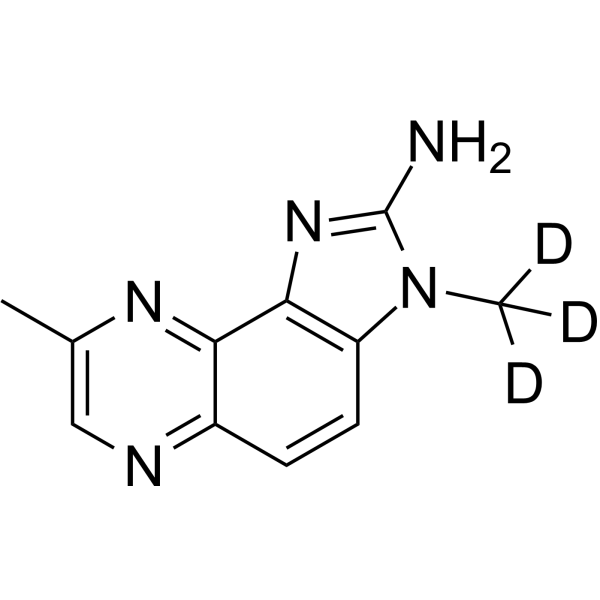
-
- HY-32126
-
|
|
Others
|
Others
|
|
1-Fluoronaphthalene is an organofluorine compound derived from naphthalene derivatives and fluorinated aromatics. 1-Fluoronaphthalene can be used to synthesize LY248686, a potent inhibitor of serotonin and noradrenaline uptake .
|
-

-
- HY-W016562S1
-
|
2-Benzamidoacetic acid-d2
|
Isotope-Labeled Compounds
Endogenous Metabolite
|
Metabolic Disease
|
|
Hippuric acid-d2 is the deuterium labeled Hippuric acid. Hippuric Acid (2-Benzamidoacetic acid), an acyl glycine produced by the conjugation of benzoic acid and glycine, is a normal component in urine as a metabolite of aromatic compounds from food.
|
-
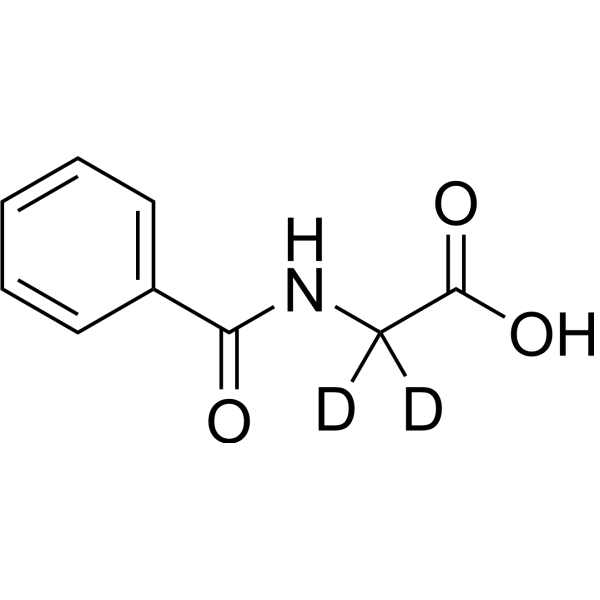
-
- HY-W016562S
-
|
2-Benzamidoacetic acid-d5
|
Endogenous Metabolite
|
Metabolic Disease
|
|
Hippuric acid-d5 is the deuterium labeled Hippuric acid. Hippuric Acid (2-Benzamidoacetic acid), an acyl glycine produced by the conjugation of benzoic acid and glycine, is a normal component in urine as a metabolite of aromatic compounds from food.
|
-
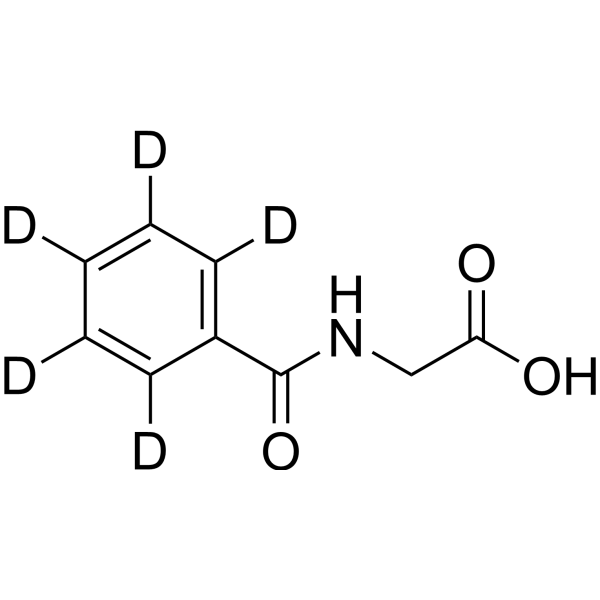
-
- HY-W016562S3
-
|
2-Benzamidoacetic acid-15N
|
Endogenous Metabolite
|
Metabolic Disease
|
|
Hippuric acid- 15N is the 15N-labeled Hippuric acid. Hippuric Acid (2-Benzamidoacetic acid), an acyl glycine produced by the conjugation of benzoic acid and glycine, is a normal component in urine as a metabolite of aromatic compounds from food.
|
-

-
- HY-W017519
-
|
Quinoxalin-2-one
|
Others
|
Others
|
|
2-Quinoxalinol (2-hydroxyquinoxaline) is a 2-hydroxylated quinoxaline that possesses photocatalytic activity and interacts with various compounds, such as antioxidant vitamins and aromatic metabolites, including neurotransmitters and the pineal hormone melatonin .
|
-
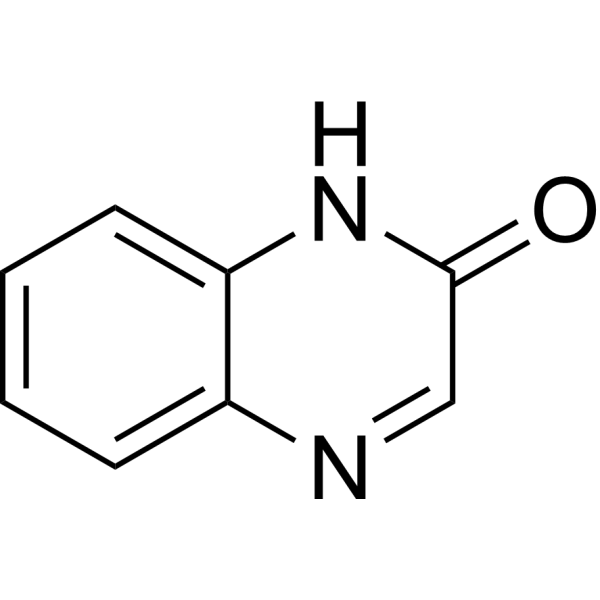
-
- HY-N8446
-
|
6,10-Dimethylundeca-5,9-dien-2-one; Dihydropseudoionone
|
Biochemical Assay Reagents
|
Others
|
|
(E/Z)-Geranylacetone is an organic compound commonly used as an ingredient in fragrances and fragrances. It can be used in some products such as perfumes, soaps and cosmetics, and can bring a fresh aromatic smell. In addition, the compound is used in some foods and pharmaceuticals, for example in candy, chewing gum and herbal remedies.
|
-

-
- HY-W026772S
-
|
|
Fluorescent Dye
Isotope-Labeled Compounds
|
Others
|
|
Fluorene-d10 is the deuterium labeled Fluorene. Fluorene, a polycyclic aromatic hydrocarbon (PAH), is a precursor to other fluorene compounds. Fluorene and its derivative can be used as a precursor to fluorene-based dyes[1].
|
-
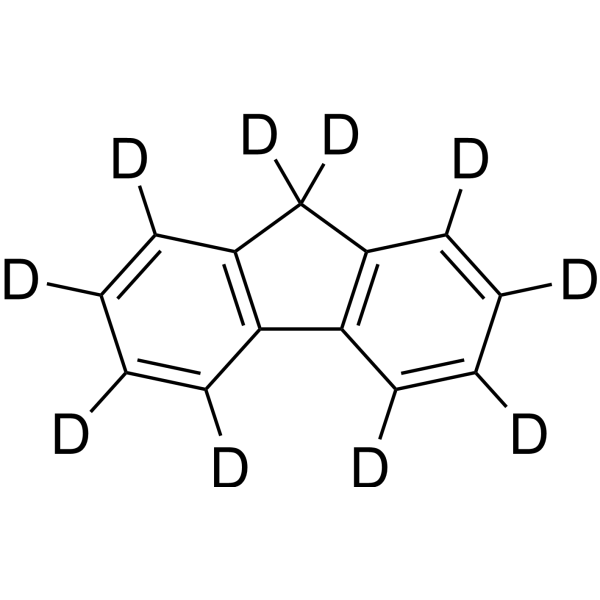
-
- HY-I0501
-
|
|
Bacterial
|
Inflammation/Immunology
|
|
2'-Aminoacetophenone is an aromatic compound containing a ketone substituted by one alkyl group, and a phenyl group. 2'-Aminoacetophenone can be used as a breath biomarker for the detection of Ps. Aeruginosa infections in the cystic fibrosis lung .
|
-

-
- HY-B1290
-
|
Phenylethyl alcohol; Phenethyl alcohol; Benzyl carbinol
|
|
|
|
2-Phenylethanol (Phenethyl alcohol) is an aromatic alcohol with a rose-like odour. 2-Phenylethanol is a flavour and fragrance compound, and can be used as a preservative and anti-microbial agent. 2-Phenylethanol has antityrosinase and antimicrobial activities .
|
-
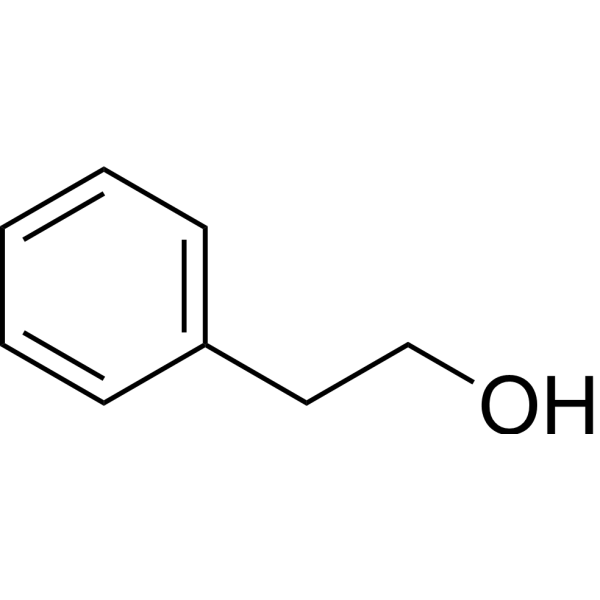
-
- HY-22167
-
|
|
Others
|
Others
|
|
Methyl 2-hydroxy-4-methylvalerate is one of dominant volatile compounds in Zhenjiang aromatic vinegar. Methyl 2-hydroxy-4-methylvalerate is used for charting flavour biosynthesis networks of vinegar microbiota .
|
-
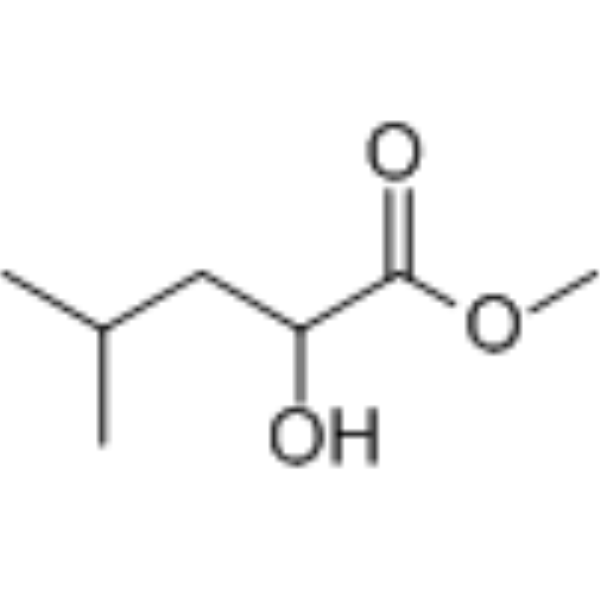
-
- HY-W015616
-
|
4-Penylbutan-2-one
|
Tyrosinase
|
Metabolic Disease
|
|
Benzylacetone is an aromatic compound from agarwood . Benzylacetone exhibits potent and reversible antityrosinase (mushroom) activity, with IC50s of 2.8 mM and 0.6 mM for monophenolase and diphenolase, respectively . Benzylacetone has appetite-enhancing and locomotor-reducing effects .
|
-
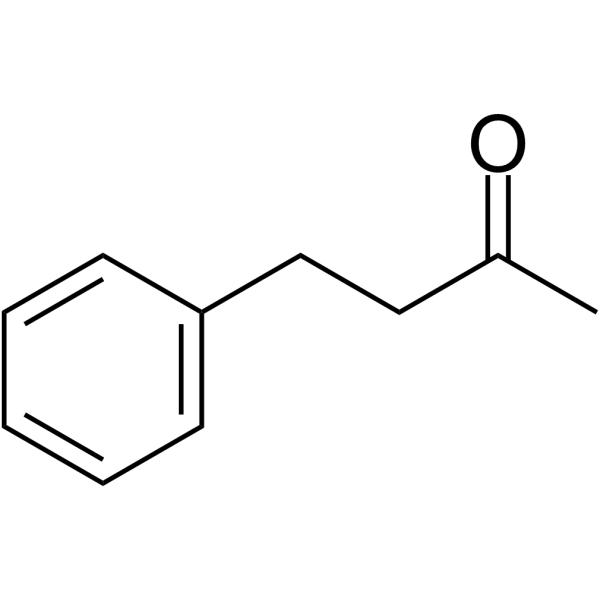
-
- HY-W012788S
-
|
|
Isotope-Labeled Compounds
|
Cancer
|
|
Maltol-d3 is a deuterium labeled Maltol (HY-W012788). Maltol, a type of aromatic compound, exists in high concentrations in red ginseng. Maltol is a potent antioxidative agent and typically is used to enhance flavor and preserve food .
|
-
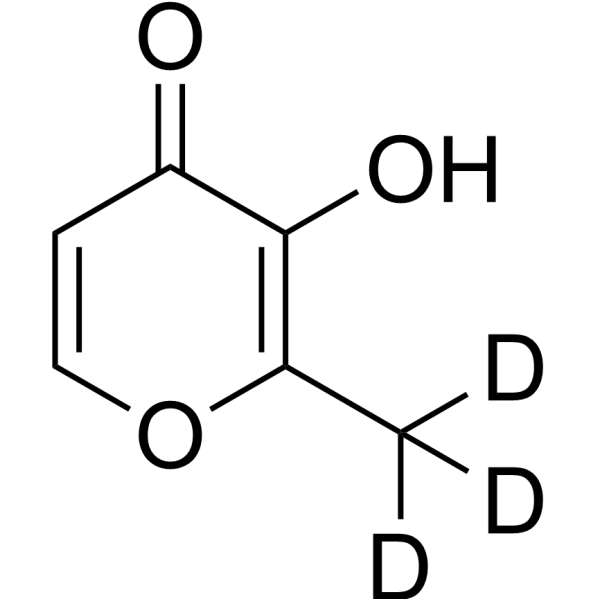
-
- HY-103609
-
|
Benzo[def]phenanthrene
|
Biochemical Assay Reagents
|
Others
|
|
Pyrene is a polycyclic aromatic hydrocarbon (PAH) composed of four fused benzene rings. It has a distinct aromatic odor, produced by incomplete combustion of organic matter. Pyrene exhibits strong fluorescence, emitting in the blue region of the spectrum, making it useful as a probe for studying molecular interactions in solution and on surfaces. Pyrene is also used as a model compound for the study of PAHs in various environments and biological systems because of its ubiquity in these environments. However, long-term exposure to pyrene has been associated with potential health risks, including carcinogenicity and mutagenicity.
|
-
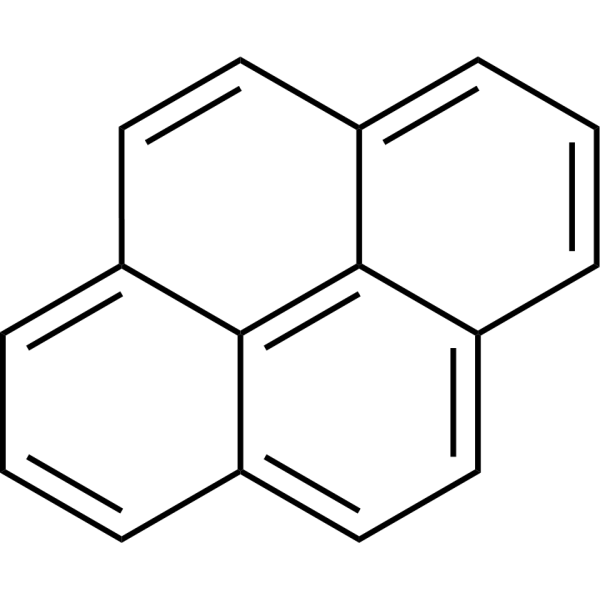
-
- HY-144881
-
|
|
Histone Methyltransferase
|
Inflammation/Immunology
Cancer
|
|
(S)-HH2853 (compound 200), a PYRIDINO five membered aromatic ring compound, is a potent EZH1/2 dual inhibitor with an IC50 of <100 nM for EZH2_Y641F. (S)-HH2853 has the potential to be used in the research of anti-tumor or autoimmune diseases .
|
-

-
- HY-W001132
-
Indole
1 Publications Verification
|
Endogenous Metabolite
|
Infection
|
|
Indole is an aromatic, heterocyclic, organic compound which widely distributed in the natural environment and can be produced by a variety of bacteria. Indole regulates various aspects of bacterial physiology, including spore formation, plasmid stability, resistance to drugs, biofilm formation, and virulence as an intercellular signal molecule .
|
-
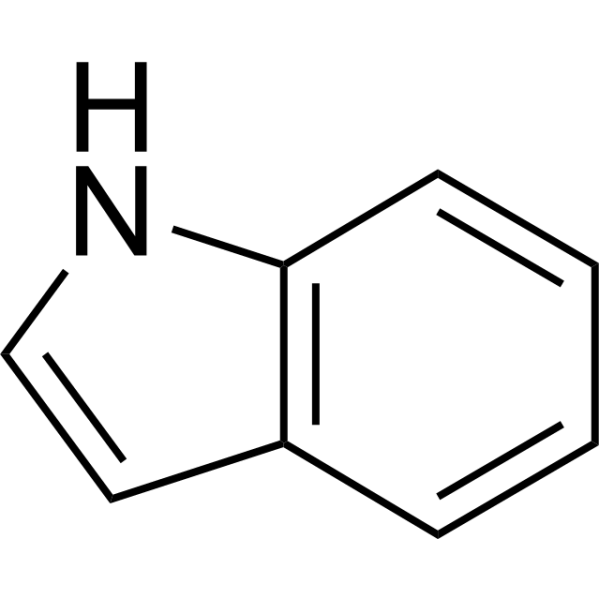
-
- HY-N0803
-
|
β-Myrcene
|
NF-κB
|
Others
|
|
Myrcene (β-Myrcene) is a type of aromatic compound that inhibits TNFα and NF-κB activity. Myrcene has anti-invasive action, inhibits cell cycle, and leads to cancer cell apoptosis. Myrcene has strong blood protection effect, anti-inflammation, and anti-inflammatory activity.
|
-
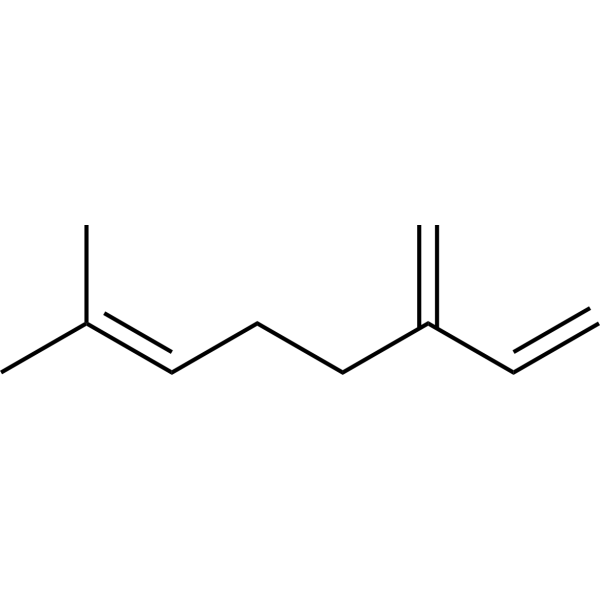
-
- HY-40294
-
|
|
Monoamine Oxidase
GSK-3
LRRK2
|
Cardiovascular Disease
Neurological Disease
Cancer
|
|
Indazole, also called isoindazole, a heterocyclic aromatic organic compound. Its derivatives display a broad variety of biological activities including anti-inflammatory, antibacterial, anti-HIV, antiarrhythmic, antifungal and antitumour properties. Indazole and its derivatives can be used for research of cancer, neurological disorders, cardiovascular diseases, gastrointestinal diseases .
|
-

-
- HY-B1290R
-
|
Phenylethyl alcohol (Standard); Phenethyl alcohol (Standard); Benzyl carbinol (Standard)
|
Virus Protease
Bacterial
|
Infection
|
|
2-Phenylethanol (Standard) is the analytical standard of 2-Phenylethanol. This product is intended for research and analytical applications. 2-Phenylethanol (Phenethyl alcohol) is an aromatic alcohol with a rose-like odour. 2-Phenylethanol is a flavour and fragrance compound, and can be used as a preservative and anti-microbial agent. 2-Phenylethanol has antityrosinase and antimicrobial activities .
|
-
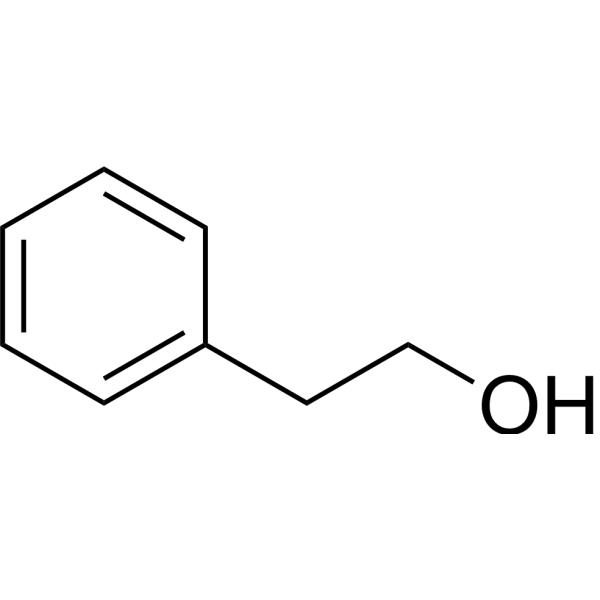
-
- HY-B0900
-
|
Anise camphor; p-Propenylanisole; Isoestragole
|
Apoptosis
Fungal
Bacterial
MMP
NF-κB
|
Infection
Neurological Disease
Inflammation/Immunology
Cancer
|
|
Anethole is a type of orally active aromatic compound that is widely found in nature and used as a flavoring agent. Anethole possesses anticancer, anti-inflammatory, antioxidant, antibacterial, antifungal, anesthetic, estrogenic, central nervous system depressant, hypnotic, insecticidal, and gastroprotective effects. Anethole can be used in the study of oxidative stress-related skin diseases and prostate cancer .
|
-
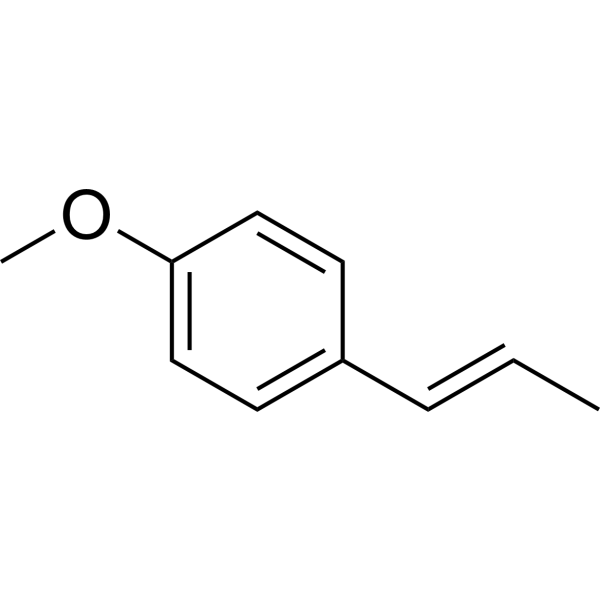
-
- HY-N8015S1
-
|
|
Bacterial
Endogenous Metabolite
Isotope-Labeled Compounds
|
|
|
Octanal-d2 is deuterated labeled Myrcene (HY-N0803). Myrcene (β-Myrcene) is a type of aromatic compound that inhibits TNFα and NF-κB activity. Myrcene has anti-invasive action, inhibits cell cycle, and leads to cancer cell apoptosis. Myrcene has strong blood protection effect, anti-inflammation, and anti-inflammatory activity .
|
-
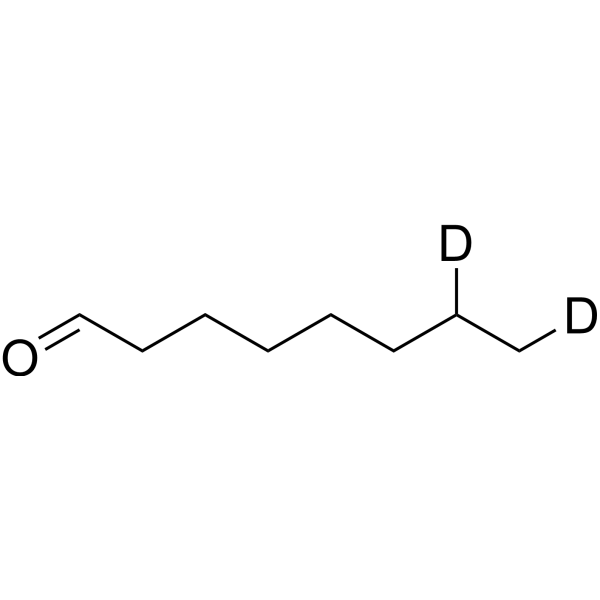
-
- HY-137234
-
|
2,6-Di-O-methyl-β-cyclodextrin
|
Biochemical Assay Reagents
|
Others
|
|
DM-β-CD (2,6-Di-O-methyl-β-cyclodextrin) is a cyclic molecule consisting of seven glucose units modified with two methyl groups at the 2- and 6-positions. It is usually used as a solubilizer and carrier for poorly soluble drugs in pharmaceutical preparations. Furthermore, it has applications in analytical chemistry, food science, and environmental remediation due to its ability to form clathrates with various guest molecules, such as aromatic compounds, pesticides, and heavy metals.
|
-

-
- HY-N0060B
-
|
(E)-Coniferic acid
|
|
|
|
(E)-Ferulic acid is an isomer of ferulic acid, an aromatic compound abundant in plant cell walls. (E)-Ferulic acid causes phosphorylation of β-catenin (β-catenin), leading to proteasome degradation, increasing the expression of pro-apoptotic factor Bax and reducing pro-apoptotic factor Expression of the survival factor survivin. (E)-Ferulic acid can effectively remove reactive oxygen species (ROS) and inhibit lipid peroxidation. (E)-Ferulic acid exerts antiproliferative and antimigratory effects in the human lung cancer cell line H1299.
|
-

-
- HY-N0060BS
-
|
(E)-Coniferic acid-d3
|
β-catenin
Bcl-2 Family
Ferroptosis
Endogenous Metabolite
|
Cancer
|
|
(E)-Ferulic acid-d3 is the deuterium labeled (E)-Ferulic acid. (E)-Ferulic acid is a isomer of Ferulic acid which is an aromatic compound, abundant in plant cell walls. (E)-Ferulic acid causes the phosphorylation of β-catenin, resulting in proteasomal degradation of β-catenin and increases the expression of pro-apoptotic factor Bax and decreases the expression of pro-survival factor survivin. (E)-Ferulic acid shows a potent ability to remove reactive oxygen species (ROS) and inhibits lipid peroxidation. (E)-Ferulic acid exerts both anti-proliferation and anti-migration effects in the human lung cancer cell line H1299[1].
|
-

-
-
HY-L0094V
-
|
|
1,398,968 compounds
|
|
The Chinese National Compound Library (CNCL) composes 1.4 million compounds possessing diversified structures. Coupled with this library will be advanced sample handling, information management and quality control systems. Most compounds in the library are drug-like, conforming to “Lipinski’s Rule of Five”, such as MW < 500, logP < 5, Hydrogen Bond Donors < 5.
|
| Cat. No. |
Product Name |
Type |
-
- HY-103609
-
|
Benzo[def]phenanthrene
|
Dyes
|
|
Pyrene is a polycyclic aromatic hydrocarbon (PAH) composed of four fused benzene rings. It has a distinct aromatic odor, produced by incomplete combustion of organic matter. Pyrene exhibits strong fluorescence, emitting in the blue region of the spectrum, making it useful as a probe for studying molecular interactions in solution and on surfaces. Pyrene is also used as a model compound for the study of PAHs in various environments and biological systems because of its ubiquity in these environments. However, long-term exposure to pyrene has been associated with potential health risks, including carcinogenicity and mutagenicity.
|
| Cat. No. |
Product Name |
Type |
-
- HY-Y0185
-
|
|
Biochemical Assay Reagents
|
|
4'-Nitroacetophenone is a nitro-aromatic compound that is an intermediate of the pharmaceutical chloramphenicol and a dye intermediate that can be used in the manufacture of synthomycin and chloramphenicol .
|
-
- HY-N8446
-
|
6,10-Dimethylundeca-5,9-dien-2-one; Dihydropseudoionone
|
Biochemical Assay Reagents
|
|
(E/Z)-Geranylacetone is an organic compound commonly used as an ingredient in fragrances and fragrances. It can be used in some products such as perfumes, soaps and cosmetics, and can bring a fresh aromatic smell. In addition, the compound is used in some foods and pharmaceuticals, for example in candy, chewing gum and herbal remedies.
|
-
- HY-137234
-
|
2,6-Di-O-methyl-β-cyclodextrin
|
Biochemical Assay Reagents
|
|
DM-β-CD (2,6-Di-O-methyl-β-cyclodextrin) is a cyclic molecule consisting of seven glucose units modified with two methyl groups at the 2- and 6-positions. It is usually used as a solubilizer and carrier for poorly soluble drugs in pharmaceutical preparations. Furthermore, it has applications in analytical chemistry, food science, and environmental remediation due to its ability to form clathrates with various guest molecules, such as aromatic compounds, pesticides, and heavy metals.
|
-
- HY-W115609
-
|
N-Benzoylaniline
|
Biochemical Assay Reagents
|
|
N-Phenylbenzamide (N-Benzoylaniline) exhibits high rectification and high conductance. N-Phenylbenzamide is utilized to manufacture dyes, pigments, perfumes and other aromatic compounds .
|
| Cat. No. |
Product Name |
Category |
Target |
Chemical Structure |
-
- HY-W010615
-
-

-
- HY-N3192
-
-

-
- HY-N11559
-
-

-
- HY-116479
-
-

-
- HY-N8274
-
-

-
- HY-N0763
-
-

-
- HY-W016562
-
-

-
- HY-N1426
-
-

-
- HY-W012788
-
-

-
- HY-Y0061
-
-

-
- HY-I0501
-
-

-
- HY-22167
-
-

-
- HY-W015616
-
-

-
- HY-W001132
-
-

-
- HY-N0803
-
-

-
- HY-B1290R
-
-

-
- HY-B0900
-
|
Anise camphor; p-Propenylanisole; Isoestragole
|
Structural Classification
Classification of Application Fields
Source classification
Plants
Microorganisms
Simple Phenylpropanols
Leguminosae
Phenylpropanoids
Umbelliferae
Vernonia Schreb.
Glycyrrhiza uralensis Fisch.
Disease Research Fields
Cancer
|
Apoptosis
Fungal
Bacterial
MMP
NF-κB
|
|
Anethole is a type of orally active aromatic compound that is widely found in nature and used as a flavoring agent. Anethole possesses anticancer, anti-inflammatory, antioxidant, antibacterial, antifungal, anesthetic, estrogenic, central nervous system depressant, hypnotic, insecticidal, and gastroprotective effects. Anethole can be used in the study of oxidative stress-related skin diseases and prostate cancer .
|
-

| Cat. No. |
Product Name |
Chemical Structure |
-
- HY-W355129S
-
|
|
|
MeIQx-d3 is the deuterium labeled MeIQx (HY-W355129) . MeIQx is a heterocyclic amine (HAs) compound and a dietary aromatic amine, which can bind covalently to hemoglobin. MeIQx is a mutagenic compound that induces liver tumors .
|
-

-
- HY-W016562S1
-
|
|
|
Hippuric acid-d2 is the deuterium labeled Hippuric acid. Hippuric Acid (2-Benzamidoacetic acid), an acyl glycine produced by the conjugation of benzoic acid and glycine, is a normal component in urine as a metabolite of aromatic compounds from food.
|
-

-
- HY-W016562S
-
|
|
|
Hippuric acid-d5 is the deuterium labeled Hippuric acid. Hippuric Acid (2-Benzamidoacetic acid), an acyl glycine produced by the conjugation of benzoic acid and glycine, is a normal component in urine as a metabolite of aromatic compounds from food.
|
-

-
- HY-W026772S
-
|
|
|
Fluorene-d10 is the deuterium labeled Fluorene. Fluorene, a polycyclic aromatic hydrocarbon (PAH), is a precursor to other fluorene compounds. Fluorene and its derivative can be used as a precursor to fluorene-based dyes[1].
|
-

-
- HY-W016562S3
-
|
|
|
Hippuric acid- 15N is the 15N-labeled Hippuric acid. Hippuric Acid (2-Benzamidoacetic acid), an acyl glycine produced by the conjugation of benzoic acid and glycine, is a normal component in urine as a metabolite of aromatic compounds from food.
|
-

-
- HY-W012788S
-
|
|
|
Maltol-d3 is a deuterium labeled Maltol (HY-W012788). Maltol, a type of aromatic compound, exists in high concentrations in red ginseng. Maltol is a potent antioxidative agent and typically is used to enhance flavor and preserve food .
|
-

-
- HY-N8015S1
-
|
|
|
Octanal-d2 is deuterated labeled Myrcene (HY-N0803). Myrcene (β-Myrcene) is a type of aromatic compound that inhibits TNFα and NF-κB activity. Myrcene has anti-invasive action, inhibits cell cycle, and leads to cancer cell apoptosis. Myrcene has strong blood protection effect, anti-inflammation, and anti-inflammatory activity .
|
-

-
- HY-N0060BS
-
|
|
|
(E)-Ferulic acid-d3 is the deuterium labeled (E)-Ferulic acid. (E)-Ferulic acid is a isomer of Ferulic acid which is an aromatic compound, abundant in plant cell walls. (E)-Ferulic acid causes the phosphorylation of β-catenin, resulting in proteasomal degradation of β-catenin and increases the expression of pro-apoptotic factor Bax and decreases the expression of pro-survival factor survivin. (E)-Ferulic acid shows a potent ability to remove reactive oxygen species (ROS) and inhibits lipid peroxidation. (E)-Ferulic acid exerts both anti-proliferation and anti-migration effects in the human lung cancer cell line H1299[1].
|
-

| Cat. No. |
Product Name |
Application |
Reactivity |
-
- HY-P81245
-
|
Cytochrome P450 1A2; cytochrome P450, family 1, subfamily a, polypeptide 2; Cytochrome P450 family 1 polypeptide 2; Cytochrome P450 subfamily I Aromatic compound inducible polypeptide 2; Cyp1a2; CYPD45; P-450d; RATCYPD45; CP12; CP 12; P3-450; Aryl hydrocarbon hydroxylase; Dioxin inducable P3 45; Flavoprotein linked monooxygenase; Microsomal monooxygenase; P450 4; P450 form 4; P450 P3; P450(PA); Xenobiotic monooxygenase; P450 1A2.
|
W; ELISA; IHC-P; IHC-F; Flow-Cyt; IF=1:100-500
|
Human, Mouse, Rat |
Your information is safe with us. * Required Fields.
Inquiry Information
- Product Name:
- Cat. No.:
- Quantity:
- MCE Japan Authorized Agent:




















































